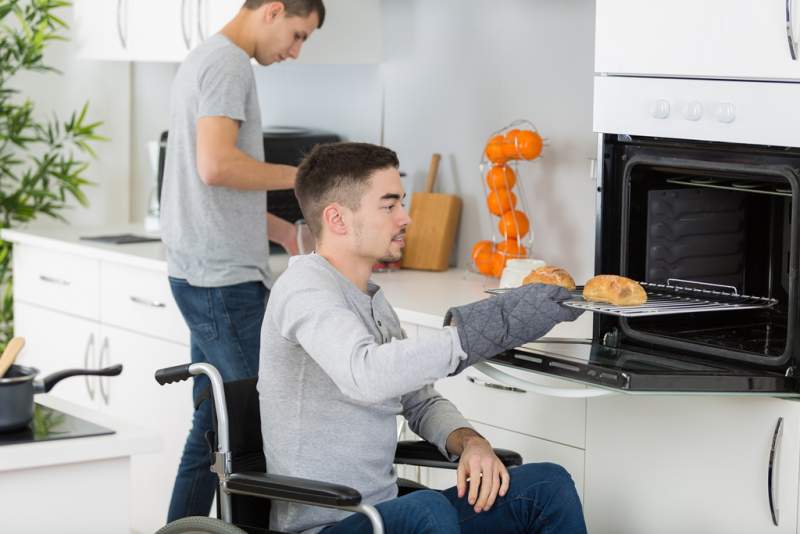A family member was involved in a car accident recently. Because of the gravity of the accident, they ended up being handicapped. They can no longer walk on their own, and for them to move around, they would always need the assistance of other family members or mobility aids. They also spent a lot of time in the hospital to undergo treatments and medications. All of these things made life a challenge for them, and you can see how they’re adjusting to the situation their in right now. And since they’re finally going home, you want things to change. You want to make sure that this family member can live comfortably even if they’re handicapped. Aside from offering your assistance whenever they move around the house, what can you do with your home to make it more handicapped-friendly?

When someone is handicapped because of an accident, the adjustment shouldn’t only come from the patient – the same is also required from the people living with them. This will be your own little way of showing support and care for someone who is going through so much. To ensure that your home can be handicap-friendly, take note of these tips:
- Widen the doorways: The doorways in your home were originally built for a person to pass through, not for wheelchairs and mobility aids. This is the reason why as early as now, you should start looking for professionals who can widen your doorways. This is important so a handicapped person can easily roam around the house without the help of others.
- Build a ramp: This is one of the most basic things you should do if you want your home to be handicapped-friendly. A ramp placed in all of your doorways won’t just help someone who is in a wheelchair but anyone who has issues with their mobility. This will guarantee that anyone can go in and out of the house with ease. For you to build a ramp in your home, make sure you secure the necessary permits first from your local state. All of the requirements should be ironed out before the construction starts.
- Add grab bars: Handicapped people will find it challenging to bend whenever they’re using the bathroom. The same is also true when they’re taking a shower. As one way of helping with their stability and balance, never forget to add grab bars in your bathroom. There should be one near the toilet and another in the shower. A standard 1-1/2 inch diameter bar works best for people’s grip.
- Install a riser: While you’re thinking about how you can improve your bathroom for handicapped people, a riser can be a good addition. This is a perfect solution for a handicapped person who can’t bend or stand up whenever using the toilet. There are many varieties of risers available in your home improvement and drug stores, and you can get one for as low as $50.
- Have step-in showers: Bathtubs can be really relaxing especially if you’ll take a bubble bath complete with all the scented candles inside the bathroom. But in the eyes of a handicapped person, it’s never the same thing. For them, bathtubs can cause accidents since it has high sides. This might be reason enough for you to convert your bathtub into a step-in shower. The latter is much more convenient and safer for the handicapped person. Benches inside a step-in shower can also provide additional support.
- Rethink flooring: When you have rugs and carpets all over the house, handicapped people who are using wheelchairs and walkers might trip. This kind of flooring is hazardous for them especially when they’re walking alone. You can prevent accidents like these from happening by using hardwood flooring, ceramic tile or vinyl. These flooring options are sturdy and safe for handicapped people.
- Arrange the kitchen for accessibility: Making your home handicapped-friendly isn’t that hard. Aside from adding a few accessories here and there, you should also think about how your kitchen is arranged. You’ll need to make sure your appliances are near the sink or counters so a handicapped person can still perform their tasks at home. Everyday items such as their plates and utensils should also be placed in lower cabinets for easy access.
- Lower closet rods: For sure, the closet you have now requires you to stand up to reach the clothes. Since a handicapped person will be living with you, you need to lower the closet rods. It’s advisable that the closet rods are about 2 feet off the ground so those using a wheelchair can easily grab their clothes.
- Replace faucet and knob handles: When someone has hand coordination issues and dexterity, turning door knobs and faucets can become a challenge. This will also require too much of their time and effort from them. Replace all of your round door knobs and faucet handles with lever ones instead. Handicapped people will find these easier to use.
- Consider your furniture: Keep in mind that handicapped people will always use a wheelchair or mobility aids to move around the house. And it’ll be hard for them to do that if the furniture is arranged too close to each other. Always allot 32 inches of space between your furniture for handicapped people to move around. If you have someone who has trouble bending down to sit, consider adding furniture coasters or wood blocks in the legs of the furniture.
- Install a staircase lift: If your house has stairs, it might be best if you have a staircase lift. This will help the handicapped person move from one floor to another with ease. Regardless of how long or short your stairs are, there’ll be a lift suitable for a handicap’s needs.
- Install a panic button: This might be uncommon for some households but a panic button can have several benefits. When you have a panic button, you’ll be alerted when a handicapped person needs your help. Some models also come with a camera which allows you to see what the handicapped person is doing.
- Think about the phones: Homes usually use corded phones as their mode of communication. You might want to swap these for wireless units or cordless phones. When you choose to use the latter, handicapped in wheelchairs will find it more accessible to use.
Use Another Perspective
Transforming your home to become handicapped-friendly isn’t hard at all. You just have to look at your home in another perspective. You should make sure that everything is accessible to them. Aside from the tweaks you’ll be doing in your home, an electric wheelchair can also do wonders for a handicapped individual. If you’re interested in buying one, you can find a lot of options from Disability Friendly Lv.
About Author – Carol Gibbins
Carol Gibbins believes in the power of writing to be able to touch the hearts and minds of readers, and this is exactly what motivates her to pursue a career as a blogger and contributor for sites such as Disability Friendly. Her penchant to write pieces with a unique and creative flair has allowed her to both entertain and inform her readers on various issues and topics related to healthcare and medicine.

 Carol Gibbins believes in the power of writing to be able to touch the hearts and minds of readers, and this is exactly what motivates her to pursue a career as a blogger and contributor for sites such as
Carol Gibbins believes in the power of writing to be able to touch the hearts and minds of readers, and this is exactly what motivates her to pursue a career as a blogger and contributor for sites such as